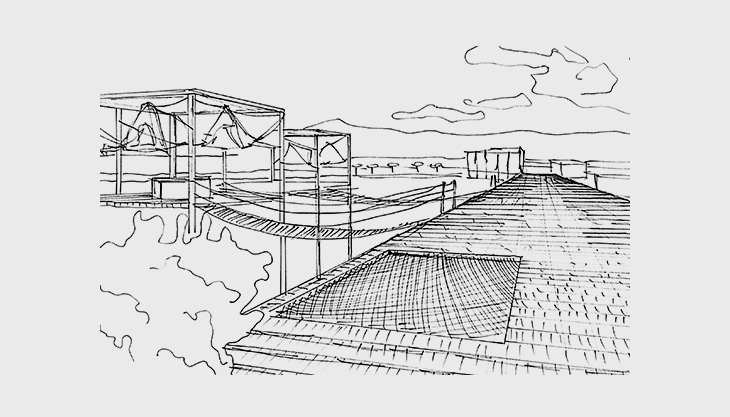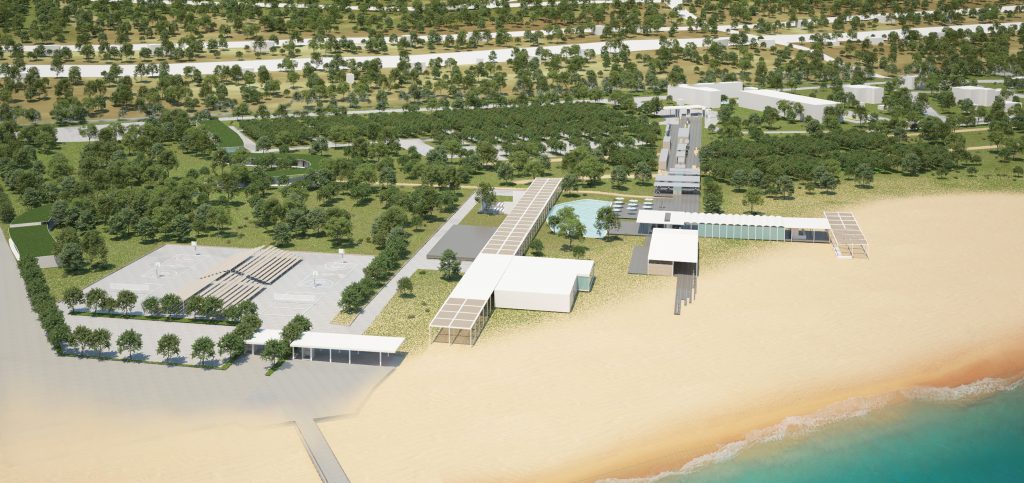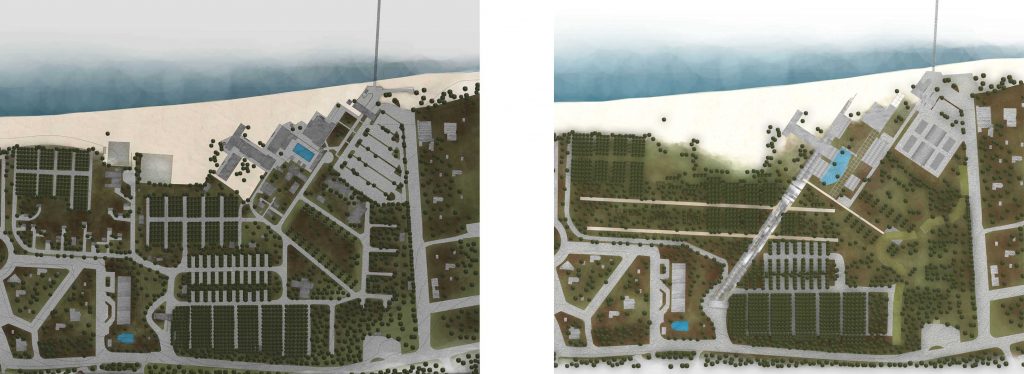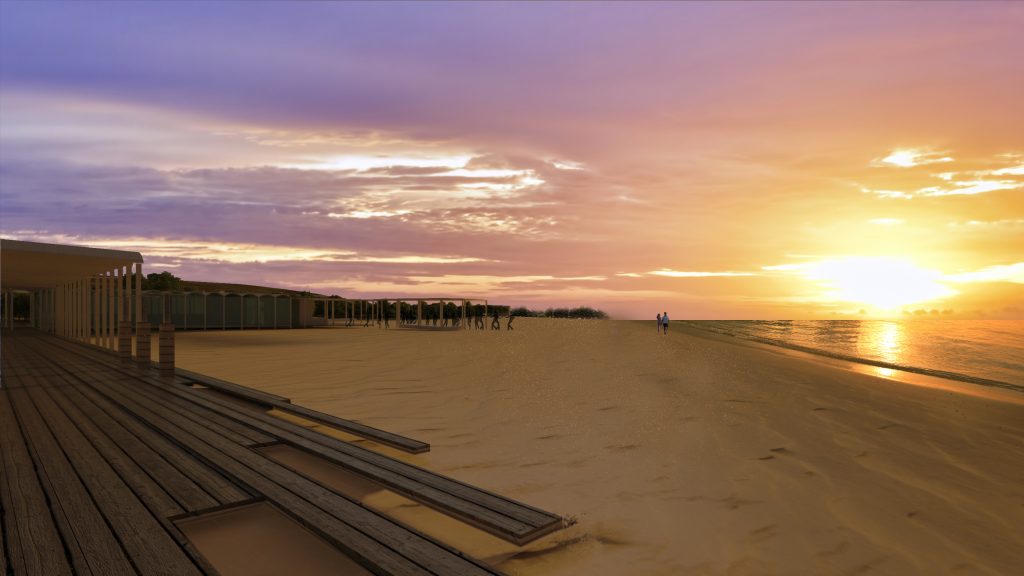
Proposals for the regeneration of an existing camping facility in Thessaloniki, Greece
GENERAL INFORMATION
- Location: Agia Triada, Thessaloniki
- Area of study: 2,230 m2
- Academic work | individual project | final design thesis | 2017
DESIGN PRINCIPLES
The site is a former camping facility located in a seaside town approximately 30 km outside Thessaloniki. It is an abandoned site with derelict structures, once being high-profile buildings offering great sea views and a range of amenities. This project proposes the re-use of the camping facility aiming to bring these emblematic structures back to life and create a catalyst for a wider regeneration in the vicinity.
DESIGN PROCESS
The design process was initiated with the evaluation of the existing key elements-structures which hold a strong sentimental bond to locals’ hearts. Interviews with local residents and a site analysis were conducted to identify these buildings setting the baseline for the conceptual ideas and design that followed.
Conceptual design focused on the camping as an activity drilling down to the type of camping that would be offered, the potential profile of the users and their needs aiming to create an efficient design that maximises the benefits and provides an improved experience for the users – unlike any other available in Greece. The ultimate goal of the proposed camping facility is to offer the original camping experience where people truly contact nature.
It seems that in today’s society, where we are constantly bombarded with many types of camping like adventure camping, backpacking, hiking, canoe camping, glamping, bicycle camping, themed camping etc., we miss the opportunity to experience the true essence of camping. This camping facility aims to bring this essense back to today’s society giving people the maximum benefits from nature.
The proposed design aims to minimise the artificial footprint by concentrating all the facilities on a platform, whilst leaving the rest of the green area and rich vegetation intact. Apart from the environmental benefits of this concept, this design provides campers with the opportunity to choose, by selecting their camping spot, how close or far from the civilisation, a.k.a. platform, they want to be and thus, catering for every taste or need.

FINAL THOUGHTS AND CONSIDERATIONS
The first step in any regeneration project should be an in-depth analysis of the existing condition. Every element matters, from a tree to a building. Constraints in the design can be turned into opportunities. In addition, speaking to the local people can give great insights and offer a better understanding of the place. Making the design right starts from reflecting in it the views and needs of the community.

Less is more. In this case, the minimum artificial footprint is a principle that should be respected. The landscape is the key characteristic of the site and it is preserved in the design proposal.

The two images above (existing condition to the left and proposed design to the right) confirm this statement. The new design aims to improve the existing condition by respecting the landscape and the surrounding community.

